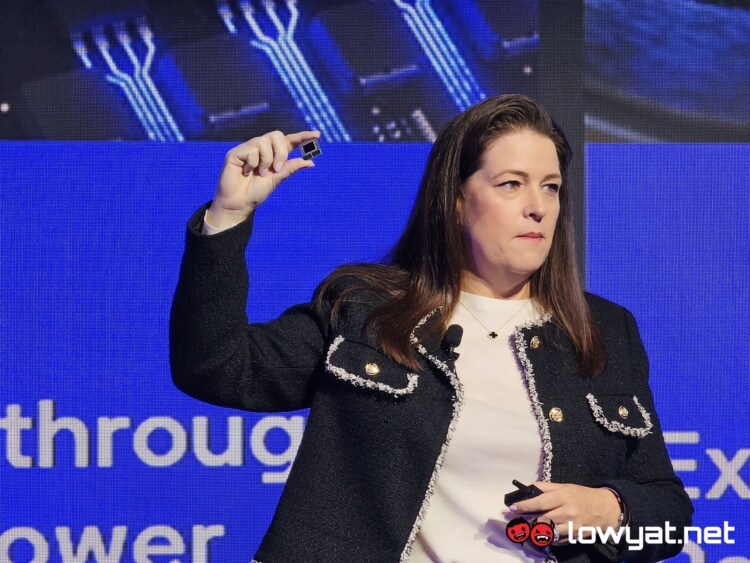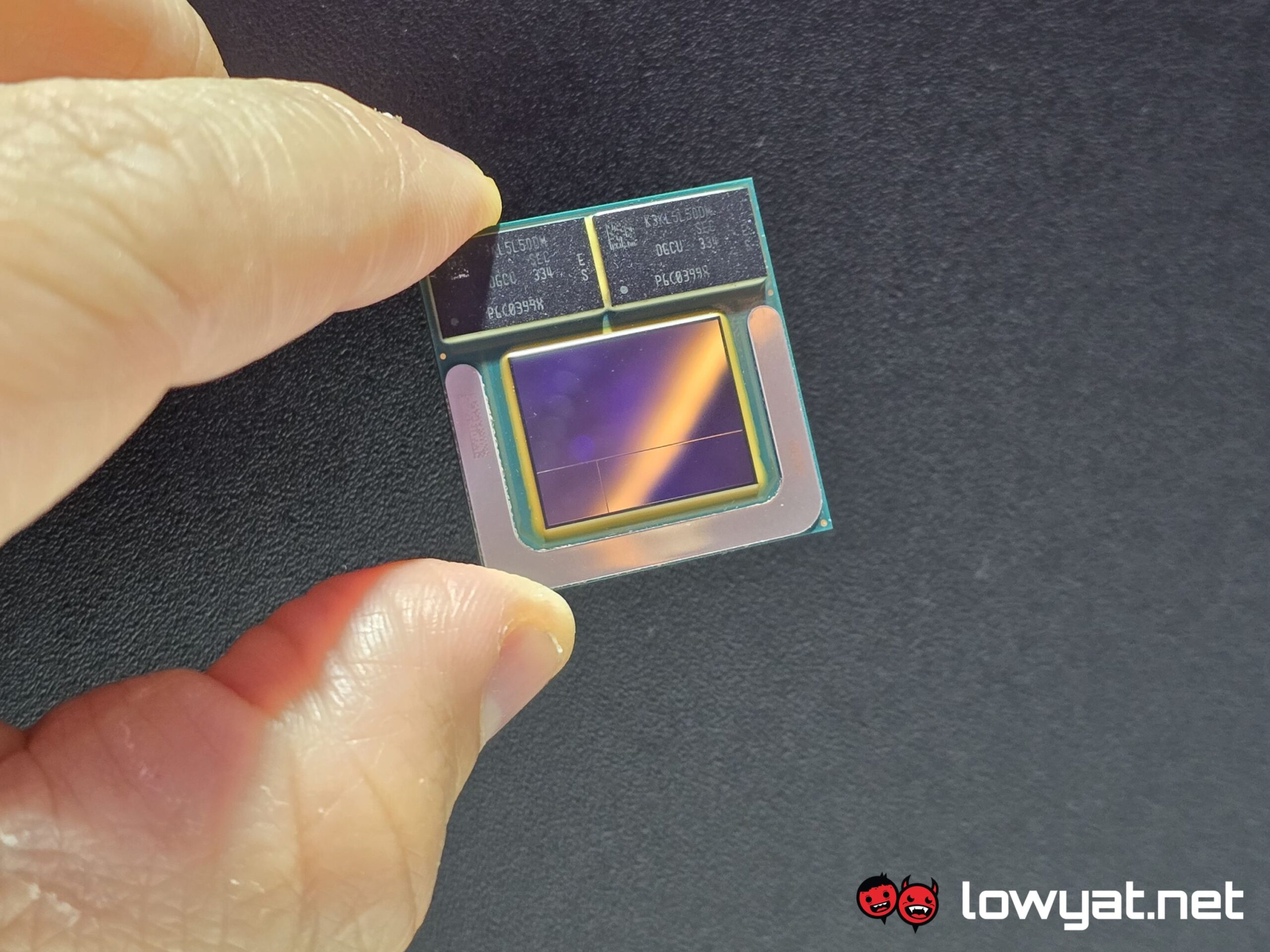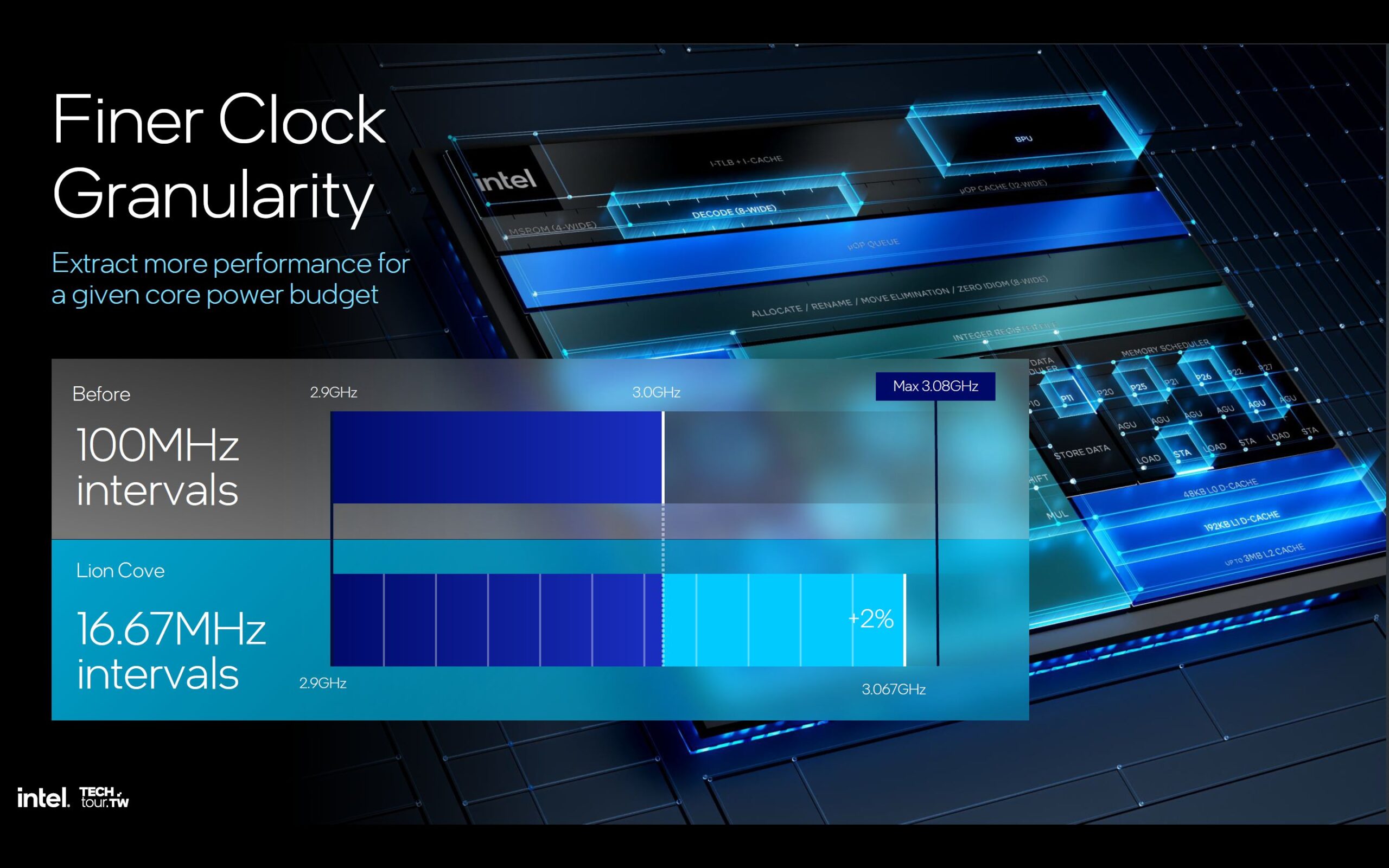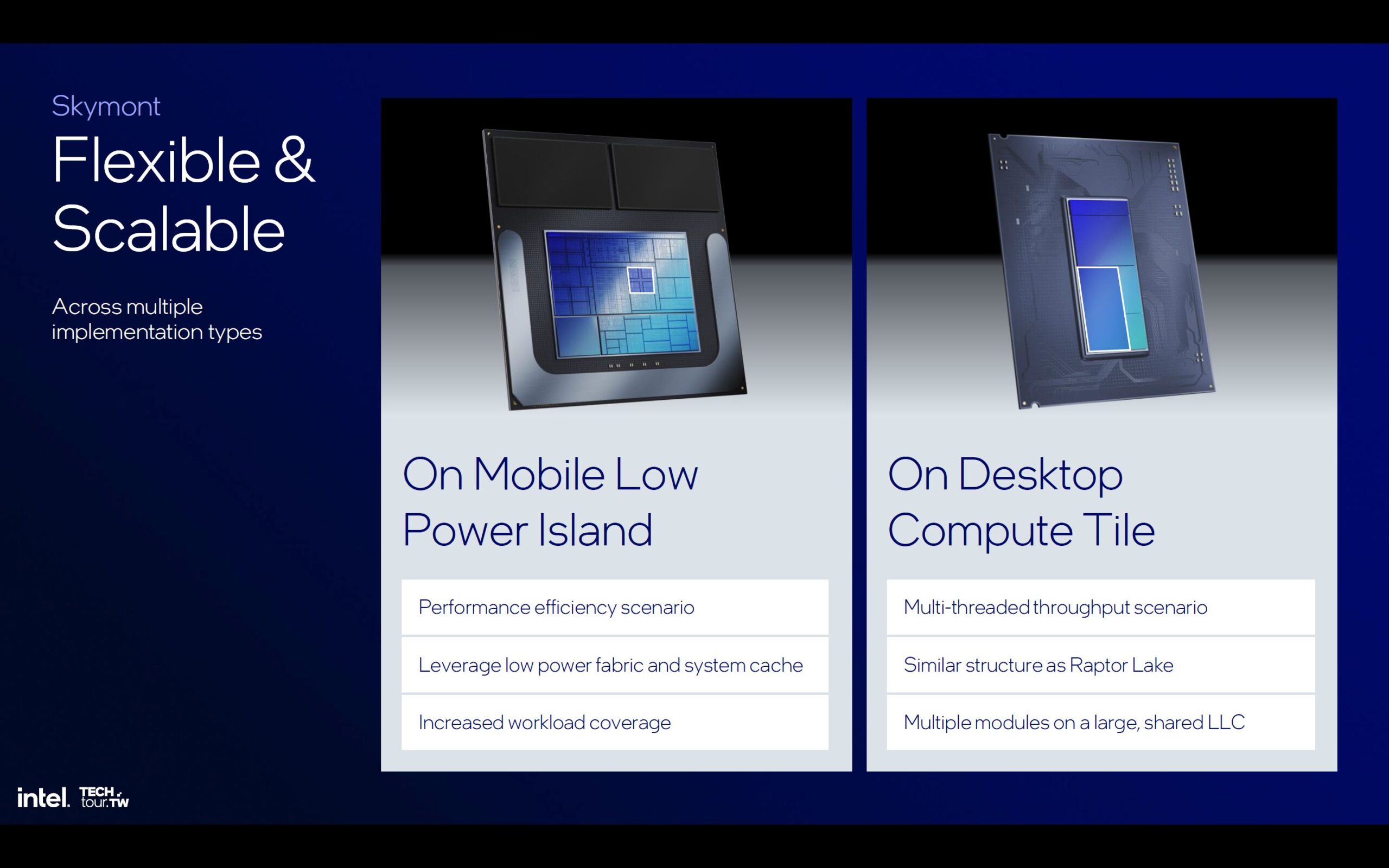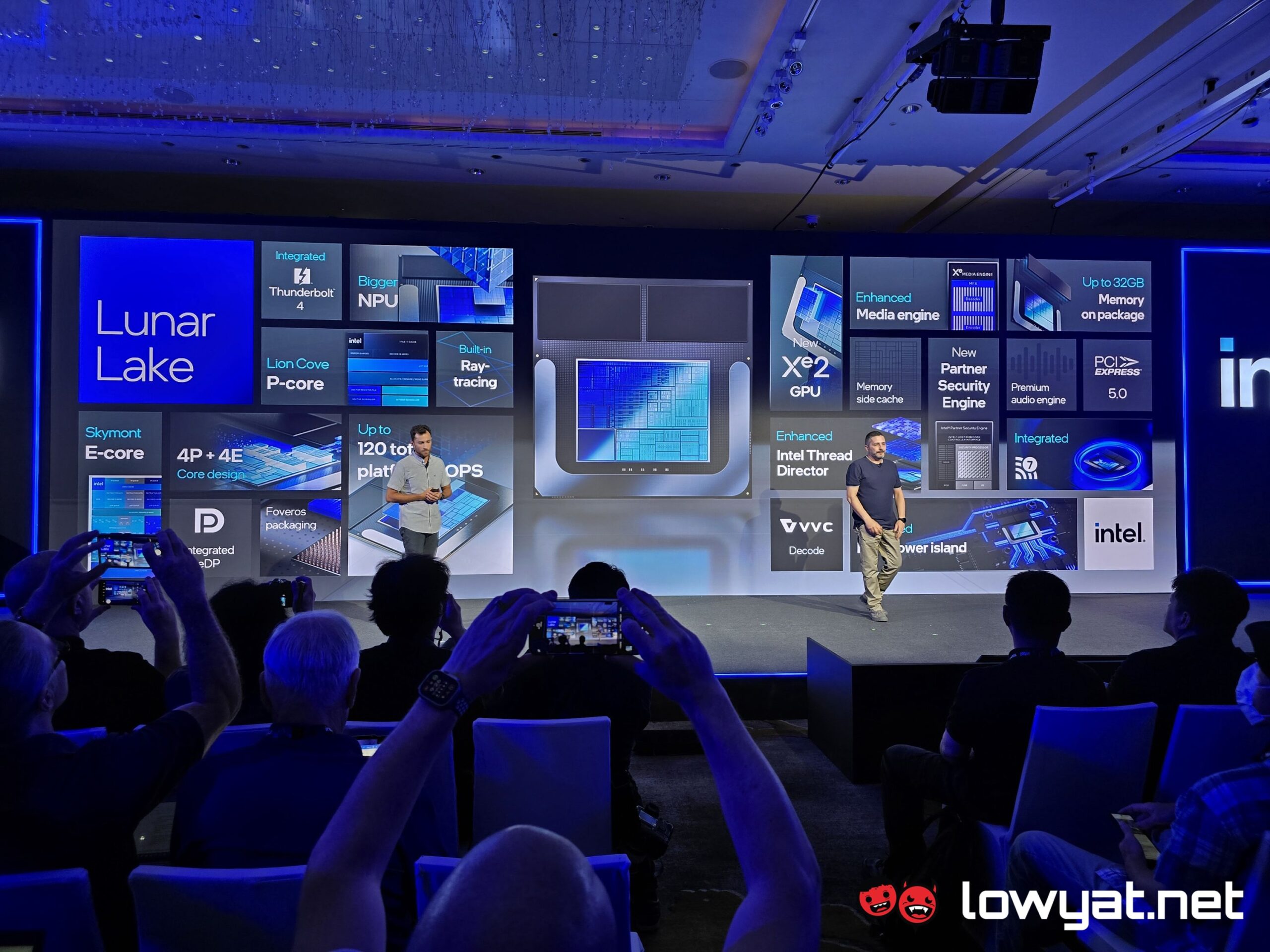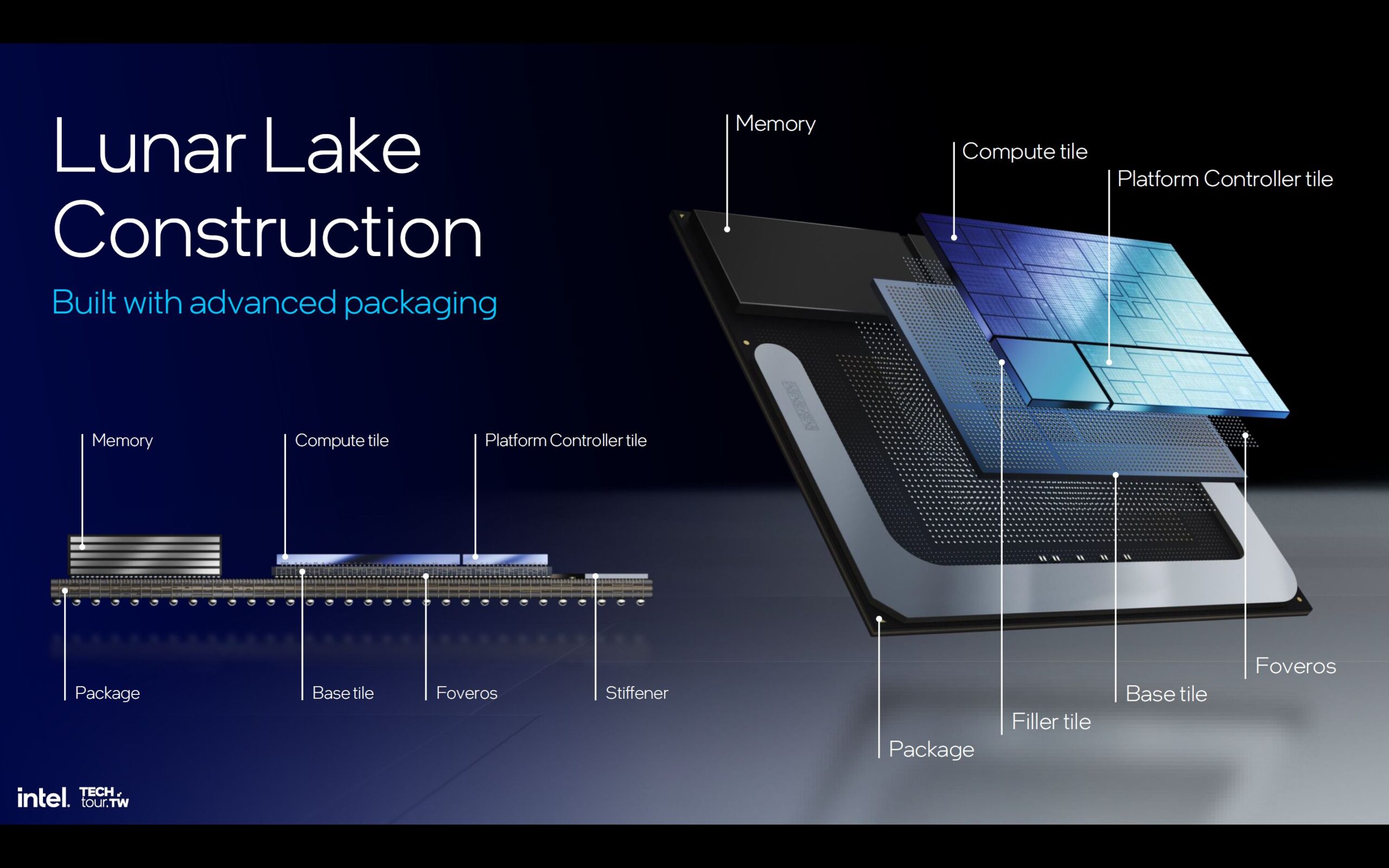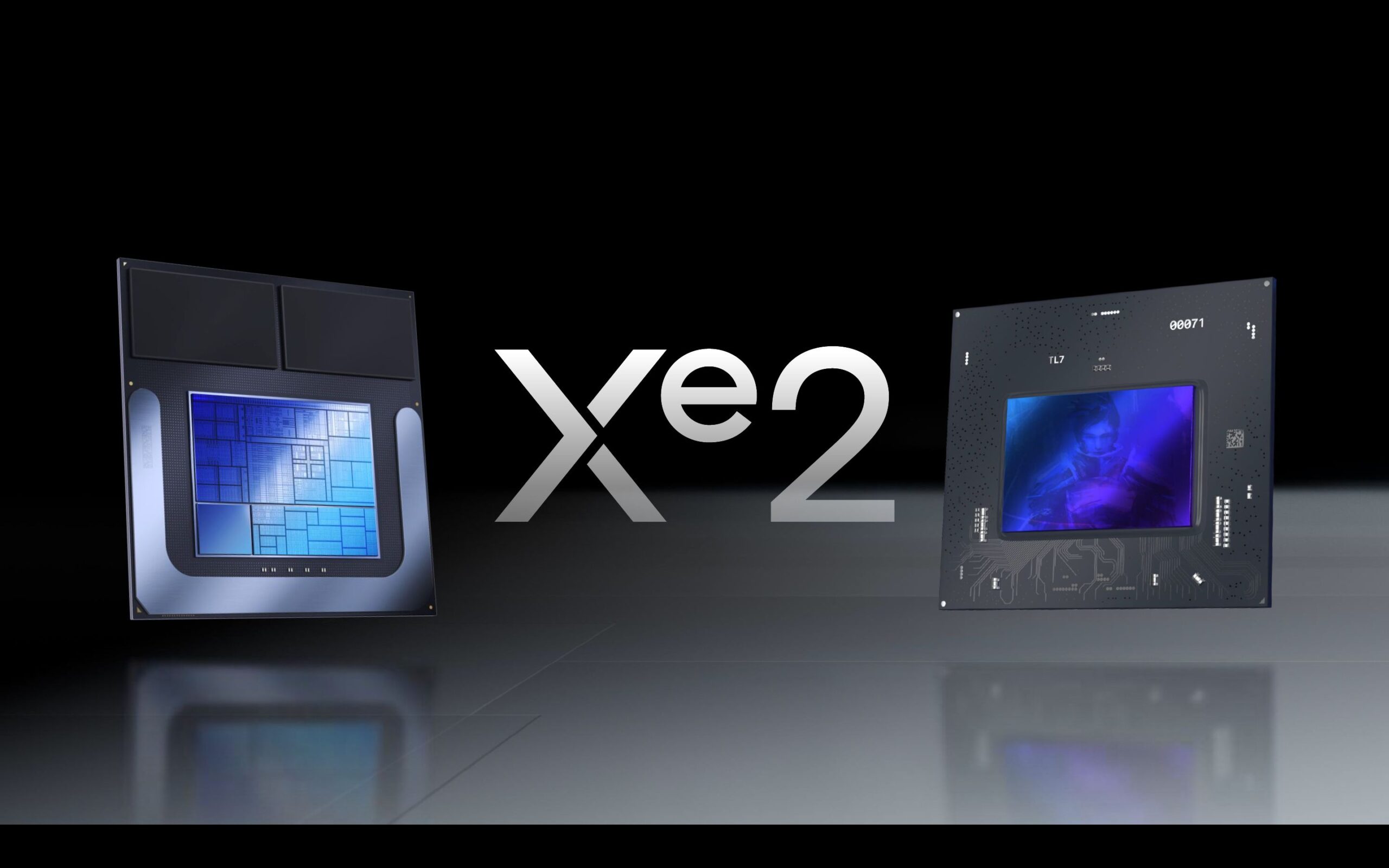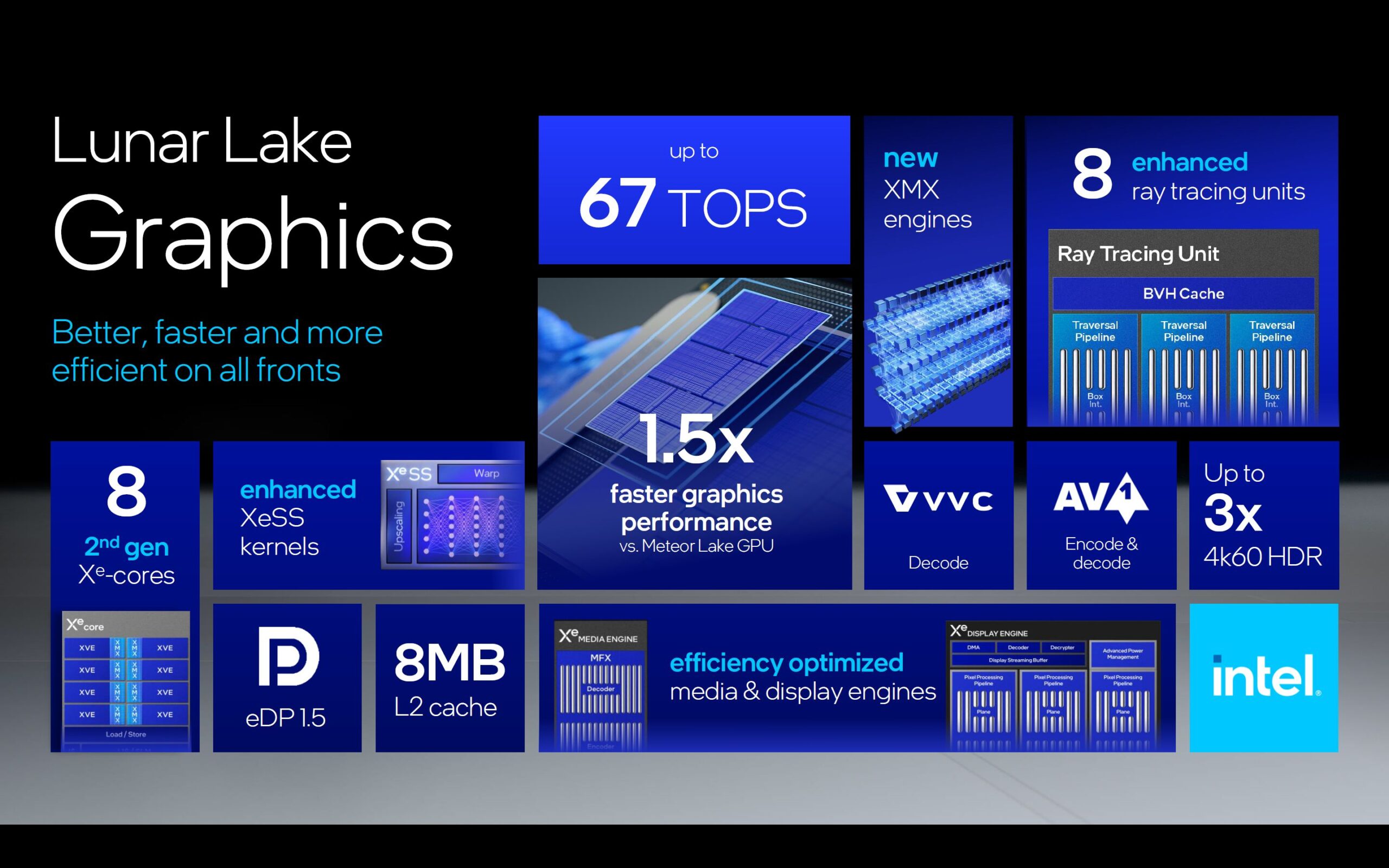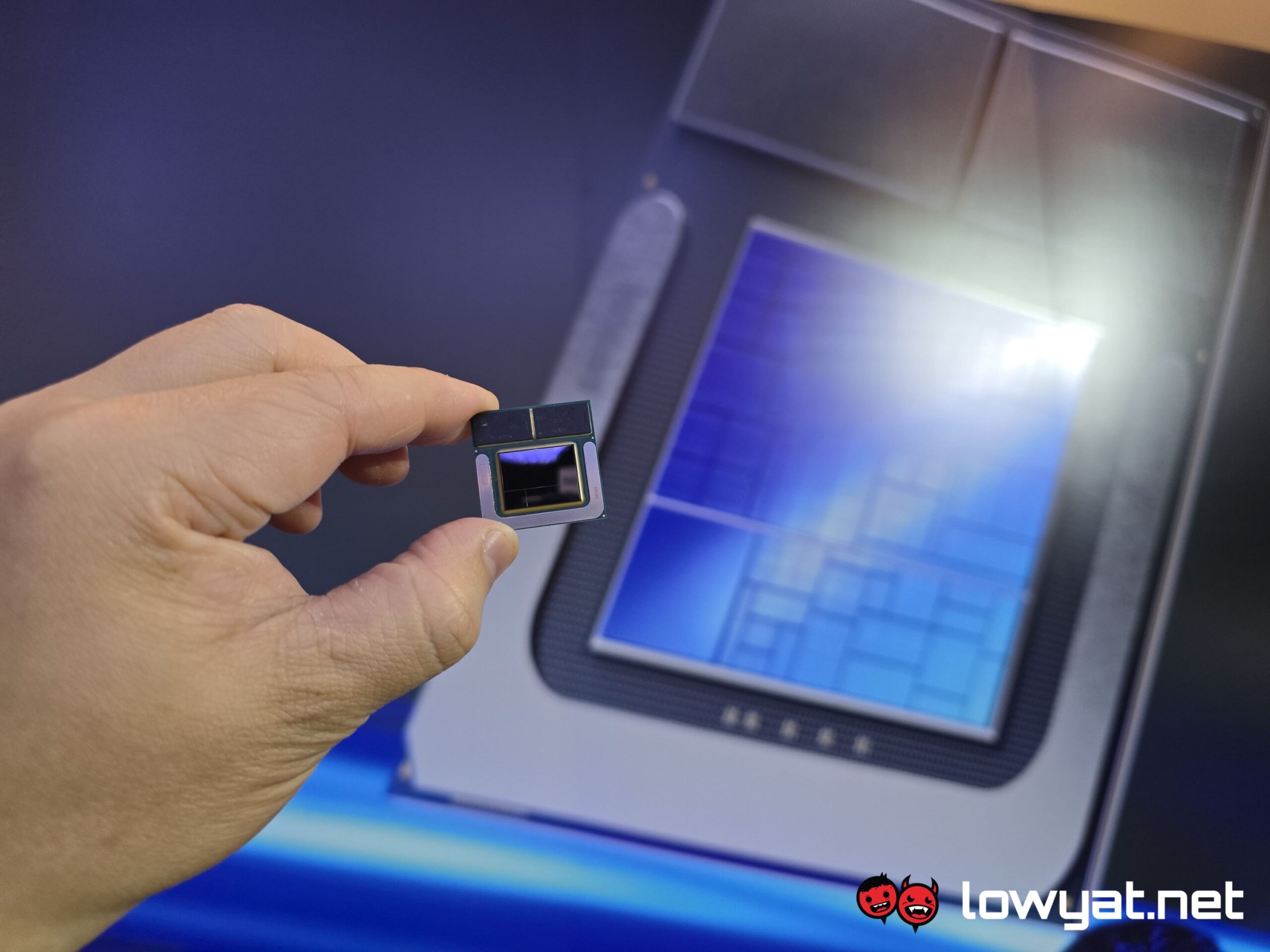Intel’s Lunar Lake is finally out of the bag and like clockwork, the next-generation CPU architecture and successor to Meteor Lake is packing more heat, more power, new cores, and of course, a more powerful NPU.
If that all sounds a little intimidating, fret not: I’m going to try and break this down as best as I can, and in as layman’s terms as I can.
New Chip, New Cores, New Die Look
Again, as with all new chip architectures, the entirety of Lunar Lake is encased in a new chip design. At a glance, it’s physically larger than last year’s Meteor Lake, and wider too.
You get the division of P-Cores and E-Cores on the silicon and yes, they’re new too. Lunar Lake’s P-Cores are based on a new Lioncove architecture, while the E-Cores are called Sykmont. Naturally, there’s also a more powerful Neural Processing Unit (NPU) that Intel says has an output of 48 TOPS, which is three TOPS more than Qualcomm’s Snapdragon X Series processors. Again, this all pertains to AI, which is both a recurring and the main theme of the industry.
In total, Intel lists Lunar Lake down as having eight cores in total – four P-Cores and four E-Cores. There is a catch with the latest microarchitecture and it lies within the P-Cores: Intel has disabled hyperthreading for them.
Hyperthreading is no longer a thing, apparently.
Intel’s reasoning is that it has optimised efficiency with Lunar Lake. The P-Cores on it actually output better performance-per-watt, area, or both, than the processor would if it were to leave hyperthreading on. Specifically, it claims that each core would generate 15% more performance-per-watt, 10% performance-per-area, and up to 30% in both sectors.
There’s another, more complex point to this tuning and it involves Intel giving Lunar Lake an improved, finer clock granularity to the increments in frequencies. Prior to this, the chipmaker would bump up the speeds in intervals of 100MHz. It’s an industry standard that allows the chip to reach higher clockspeeds faster, but that also meant the processor cores would top-out or peak, if you will, faster as well.
With the new Lion Cove P-Cores, Intel dropped those intervals down to 16.67MHz. While you might think this as slower, it isn’t really. What you get in return are P-Cores that are able to hit higher boost clocks. Not by a lot, but certainly more than what you’d get with industry-standard intervals.
Then there are the four E-Cores. I won’t lie, I’m still not sure exactly how they work, but here I go.
Not low-power island E-Cores but at the same time, they are.
The words Intel is using to describe its new Skymont E-Cores for Lunar Lake are “flexible and Scalable”. The flexible part of Skymont refers to how the chipmaker has designed them to something I will describe as priority amorphous. Here’s the thing: there is no longer a dedicated low-power E-Core island, as those have technically been absorbed into the main E-Cores.
How Intel explains it is that, with Skymont, the four E-Cores are able to transform itself into a low-power island, dedicating two of its cores to those menial tasks of running a music streaming service or letting a YouTube video or Netflix run in the background. But, when that’s not needed, they stay as standard E-Cores and are relegated to work, based on the scenario.
Now, one question we asked Intel about actually pertains to the core count for Lunar Lake, and the possibility of different SKUs with varying core counts. You see, the chipmaker consistently referred to the processor as an eight-core processor, with equal parts P-Cores and E-Cores but said little about what sort of Core or Core Ultra models would be available.
Basically, it fell short of answering the question of just how many cores a top-tier Lunar Lake could potentially carry, but again, the brand gave me no clear answer. But moving on, we also need to speak about…
A New NPU Engine
Like Lion Cove and Skymont, Lunar Lake also comes with a beefed up NPU architecture, dubbed simply as NPU 4. Compared to Meteor Lake, it’s got about twice the power efficiency and a peak performance of 48 TOPS. For context, NPU 3 in Meteor Lake has a peak performance of 11.5 TOPS.
So, what’s different? For starters NPU 4 has an increased number of engines, increased frequency, and of course, an improved architecture. Beneath the architecture are six Neural Compute Engines, along with 12 Enhanced Shave DSPs and native activation function and data conversion support.
But as exciting as these new technologies sound, there is one small twist to all of Lunar Lake, and that is…
Different Process Node, Same Intel Packaging
Lunar Lake is built on a 3nm process but for the first time in quite a while, it isn’t built on Intel’s own self-named architecture. Virtually everything, from the CPU to the NPU, is raised on a foundation built from TSMC’s N3B process node. And the reason for this? The chipmaker’s own self-styled Intel 3 process isn’t ready, and won’t be for a little while more.
Couple that with Intel’s near-military regiment to meet its goals of getting oh-so-many process nodes out the door in the next four years, it’s not wrong to say that the chipmaker has found itself in a “beggars cannot be choosers” or “I’ll take what I can get” situation.
On the flipside, all of Lunar Lake is still built layer upon layer with Intel’s Foveros packaging technology, which is both good and cost-efficient. The last Intel wants is to make its own multi-island and multi-package chip design technology obsolete, less than a year after it was put in place. On a somewhat related note, I should also mention that those two modules sitting on top of the die are actually memory chips. Intel managed to attach the chips directly to the substrate, which means faster communications and packet transfers between the die and memory.
Above all else, there is one other important component to Lunar Lake: the new Xe2 GPU cores.
Battlemage GPU Cores In All But Name
Lunar Lake marks another milestone for Intel, what with it being the first processor to ship out with its brand Xe2 GPU cores. If you’re wondering why that sounds familiar, it’s because these are the very same cores we’ll be seeing down the line, when Intel chooses to launch its ARC Battlemage graphics cards, right and proper.
Shifting back our focus to Xe2 on Lunar Lake, Intel’s engineers have reworked and improved the GPU engine, enabling it to take on higher utilisation, improved distribution, and of course, better performance-per-watt.
In total, the new Xe2 GPU on Lunar Lake comprises eight cores, eight enhanced ray-tracing units, and a new Xe Matrix Extension (XMX) AI acceleration engine with a peak performance of up to 67 TOPS in INT8 computations.
Intel has also split the Xe Media Engine and Display Engine into separate modules, the former now able to execute low power hardware decode for what Intel is also introducing as its new VVC codec technology, for Lunar Lake.
The Xe Display Engine for Lunar Lake also focuses on efficiency but is still able to output up to three 4K60 HDR displays via HDMI 2.1 or DisplayPort 2.1. Not only that, but it also introduces the latest eDP 1.5 standard for laptop panels.
Again, there are still a lot of questions about Lunar Lake I am still waiting on the chipmaker to provide, such as the SKUs, the overall TDP, among other things. That being said, it will be interesting to see how the new chips will take on Qualcomm’s Snapdragon X Series laptops.

